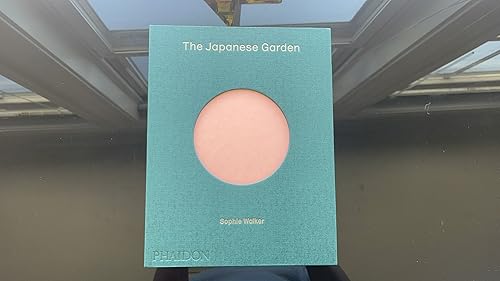Sophie Walker’s “The Japanese Garden” is a stunning coffee table book that invites readers into the tranquil world of Japanese gardening. This beautifully illustrated volume not only showcases breathtaking gardens but also explores their rich history and cultural significance. With essays and photographs that highlight everything from ancient shrines to modern Zen designs, it captivates anyone interested in nature and design.
Walker’s insightful writing offers an engaging look at the art of Japanese gardens, making it a valuable addition for garden enthusiasts and casual readers alike. Each page reveals the delicate beauty and thoughtful detail that defines these remarkable spaces. The combination of stunning visuals and informative text creates an experience that is both relaxing and inspiring.
Exploring the Essence of The Japanese Garden
The Japanese garden carries profound meaning and beauty, as seen through the lens of Sophie Walker. Her insights and the philosophical elements of these gardens reveal their deep emotional and cultural significance.
Sophie Walker’s Insights
Sophie Walker, a noted garden designer and author, delves into what makes Japanese gardens unique. She emphasizes the harmony of natural elements, such as water, stone, and plant life. Each component is carefully chosen to create a balance that reflects the beauty of nature.
Walker highlights that these gardens are designed not just for aesthetics, but for contemplation. They invite visitors to immerse themselves in a peaceful environment. She encourages readers to appreciate the subtleties in design and the stories behind each garden. This attention to detail transforms a garden into an experience rather than just a visual delight.
Philosophical Underpinnings
The philosophy behind Japanese gardens is rooted in concepts like Zen and the connection to nature. These gardens embody principles such as simplicity, tranquility, and balance. Each element serves a purpose, encouraging mindfulness and reflection.
For instance, water symbolizes purity and often represents the flow of life. Rocks serve as mountains or islands, grounding the space. Additionally, the layout of pathways guides visitors through a journey of exploration and introspection, making each visit a personal experience.
Design Elements and Aesthetics
Japanese gardens are known for their unique design elements and aesthetics. They blend nature and art to create spaces that feel serene and balanced. Key aspects such as features, harmony, and mindful use of space contribute to their beauty.
Key Features of Japanese Gardens
Japanese gardens often include specific features that enhance their charm. Elements like water, rocks, and plants play crucial roles.
- Water can represent purity and calmness. Ponds or streams reflect the sky and surrounding trees.
- Rocks symbolize mountains or islands. They are arranged thoughtfully to guide the eye.
- Plants are chosen for their seasonal beauty. Cherry blossoms, maples, and bonsai trees provide stunning visuals throughout the year.
These features come together to form a tranquil environment, inviting visitors to step into a different world.
Visual Harmony and Composition
The arrangement of elements in a Japanese garden creates a sense of harmony. Each component connects with others visually and emotionally.
- Asymmetry is a common technique, as it breaks conventional patterns. This adds intrigue and natural flow.
- Color palettes are often subtle, focusing on greens, browns, and soft blooms. This creates a calming atmosphere.
- Pathways guide visitors through the landscape, encouraging exploration and contemplation.
This careful attention to composition fosters a peaceful atmosphere, allowing for relaxation and reflection.
Use of Space and Scale
Space in Japanese gardens is used thoughtfully to create balance. Gardeners pay close attention to scale, ensuring that all elements complement one another.
- Negative space is just as important as the plants and structures. It allows the eye to rest and helps highlight features.
- Proportions are carefully managed. For instance, large rocks may anchor a space, while smaller plants provide a delicate touch.
- Layering creates depth, with taller trees at the back and smaller plants in the front.
These principles work together to ensure that the garden feels open yet intimate, making it a perfect retreat.
Cultural and Historical Context
The cultural and historical background of Japanese gardens is rich and layered. These gardens reflect the philosophies and artistic values of their time, showcasing the connection between nature and human experience. Understanding these influences can enhance appreciation for the beauty and meaning behind each design.
Influence of Zen Buddhism
Zen Buddhism greatly impacted the development of Japanese gardens. The philosophy emphasizes simplicity, tranquility, and harmony with nature. This is evident in the use of rocks, water, and plants to create serene spaces.
Key Elements:
- Minimalism: Gardens often have few elements, allowing the mind to find peace.
- Symbolism: Features like stones can represent mountains or islands.
- Meditative Spaces: Zen gardens invite quiet reflection, fostering inner calm.
Garden Evolution Through Eras
Japanese gardens evolved significantly across different historical periods. Each era brought new styles and philosophies, reflecting changes in society and culture.
Important Eras:
- Heian Period (794-1185): Inspired by Chinese gardens, focusing on aesthetics and nature.
- Kamakura Period (1185-1333): Introduction of Zen gardens with simple, natural designs.
- Edo Period (1603-1868): Development of more elaborate gardens with diverse plant species.
Each period’s design choices reveal the values and beliefs of the time. The evolution illustrates how gardens became a space for both beauty and connection to nature.
